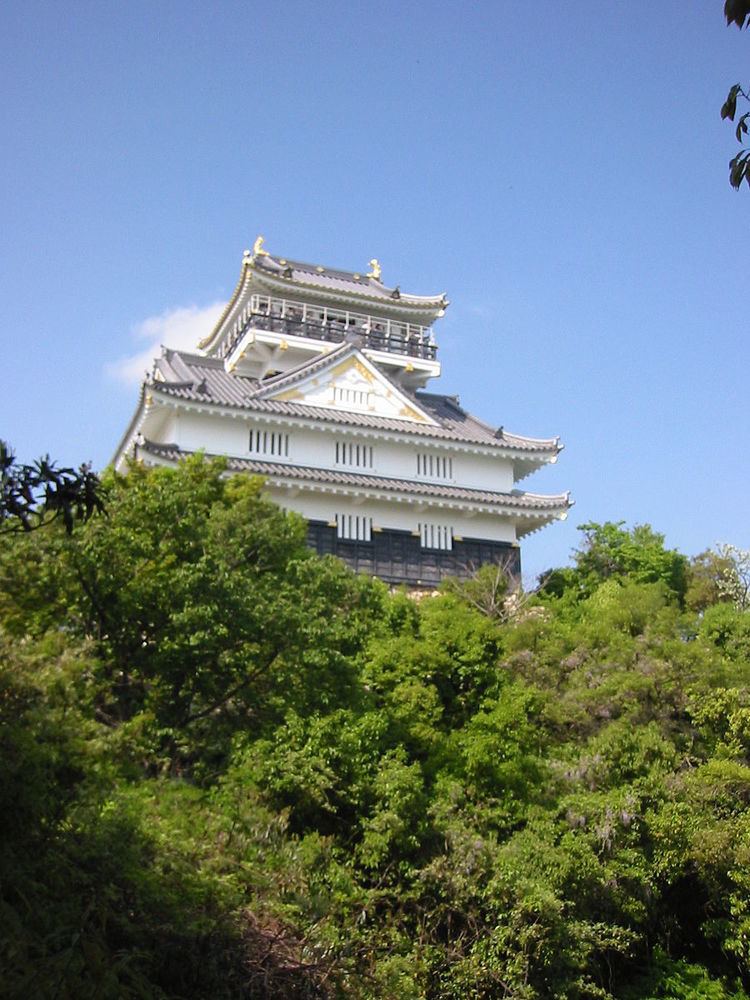Name Saito Dosan | ||
 | ||
Died May 28, 1556 (aged 62)Battle of Nagaragawa, Mino Province | ||
Death of saito dosan shogun 2 machinima
Saitō Dōsan (斎藤 道三, 1494 – May 28, 1556), also known as Saitō Toshimasa, was a Japanese samurai during the Sengoku period.
Contents
- Death of saito dosan shogun 2 machinima
- Nobunagas Ambition Sphere of Influence Nhimes Marriage Cutscene 1 English voices
- Early life
- Career
- Afterwards
- Pseudonyms
- Family
- References

He was also known as the Viper of Mino (美濃の蝮, Mino no Mamushi) for his ruthless tactics. His honorific title from the Imperial Court was Yamashirō-no-kami and since he was a monk he was also called Saitō Yamashirō-nyudō-no-kami.
Nobunaga's Ambition: Sphere of Influence - Nōhime's Marriage (Cutscene #1, English voices)
Early life
Originally a monk, he later became a seller of oil. He became a daimyō through gekokujō of Toki Yorinari in Mino Province. The Saito fortress was located at Inabayama.
He married Ōmi no kata, a daughter of Akechi Mitsutsugu.[1]
Career
He defeated Oda Nobuhide at the Battle of Kanōguchi in 1547.
However, eventually Dosan was defeated by Oda Nobuhide and was forced to give his daughter in marriage to Nobunaga. Dōsan became the father-in-law of Oda Nobunaga.
In 1556, Saitō Dōsan fell in battle against forces led by his own adopted son, Saitō Yoshitatsu in the Battle of Nagara-gawa.
Afterwards
Around 1555, rumors began to circulate that Saitō Yoshitatsu was not in fact Dōsan's son; it was said that he was Yorinari's. It does not appear that Yoshitatsu had been aware of that possibility himself until he heard the rumors.
The circumstances surrounding this are unclear, however. One belief is that Dōsan, having had a number of sons after Yoshitatsu, had decided to name one of them heir (despite having officially retired by this point in favor of Yoshitatsu). Another theory holds that Yoshitatsu simply assumed that he would be disinherited, and decided to move first. A further idea is that Saitō Yoshitatsu just elected to usurp his father's power.
In desperation, Dosan is alleged to have named Nobunaga as lord of Mino in his will and sent this document to Nobunaga. Nobunaga, however, was unable to provide help.
Dōsan's head was taken by a certain Komaki Genta, a retainer of Yoshitatsu's son Tatsuoki. His remains were originally interred in Sōfuku-ji, but they were later moved to Jōzai-ji because the Nagara River kept overflowing and covering his burial mound. Both temples are located in Gifu.
Pseudonyms
Saitō Dōsan is known for having a large number of pseudonyms and for frequently changing his name. Some believe that this is because there were two Saitō Dōsan, father and son, and the son adopted his father's name after his death. Other names of Saitō Dōsan are Minemaru (峰丸), Hōrenbō (法蓮坊), Matsunami Shogorō (松浪庄五郎), Nishimura Kankurō Masatoshi (西村勘九郎正利), Shinkurō (新九郎), Nagai Norihide (長井規秀), and Saitō Sakondayu Toshimasa (斎藤左近大夫利政). The name Saitō was adopted from the former shugodai of Mino who had been overcome by the Nagai clan in the 1520s.
